Blue forests, a term often used to describe underwater ecosystems, play a crucial role in maintaining the health of our planet. These ecosystems are not only stunning in their beauty but also vital to life on Earth. In this article, we will explore five remarkable blue forests that are integral to our planet’s wellbeing and biodiversity.
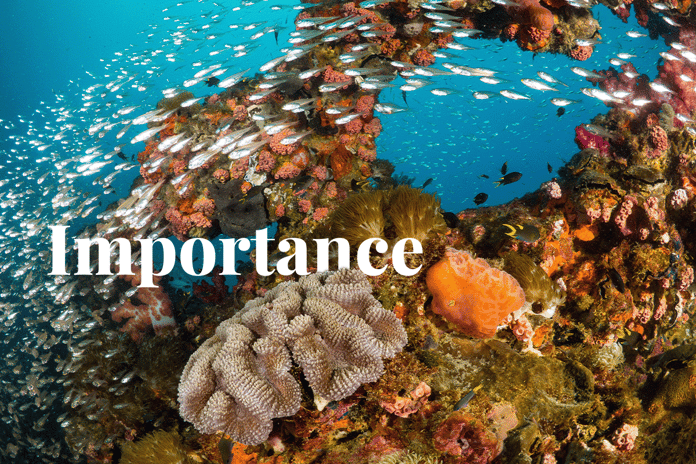 View of coral reef with hundreds of glass fish, Great Barrier Reef, Australia.
View of coral reef with hundreds of glass fish, Great Barrier Reef, Australia.
1. Mangrove forests
Mangrove forests are coastal ecosystems characterised by salt-tolerant trees and shrubs. They are found in tropical and subtropical regions, lining the interface between land and sea. These unique ecosystems are often located in estuaries, where freshwater from rivers meets the saltwater of the ocean, creating a dynamic and productive environment.
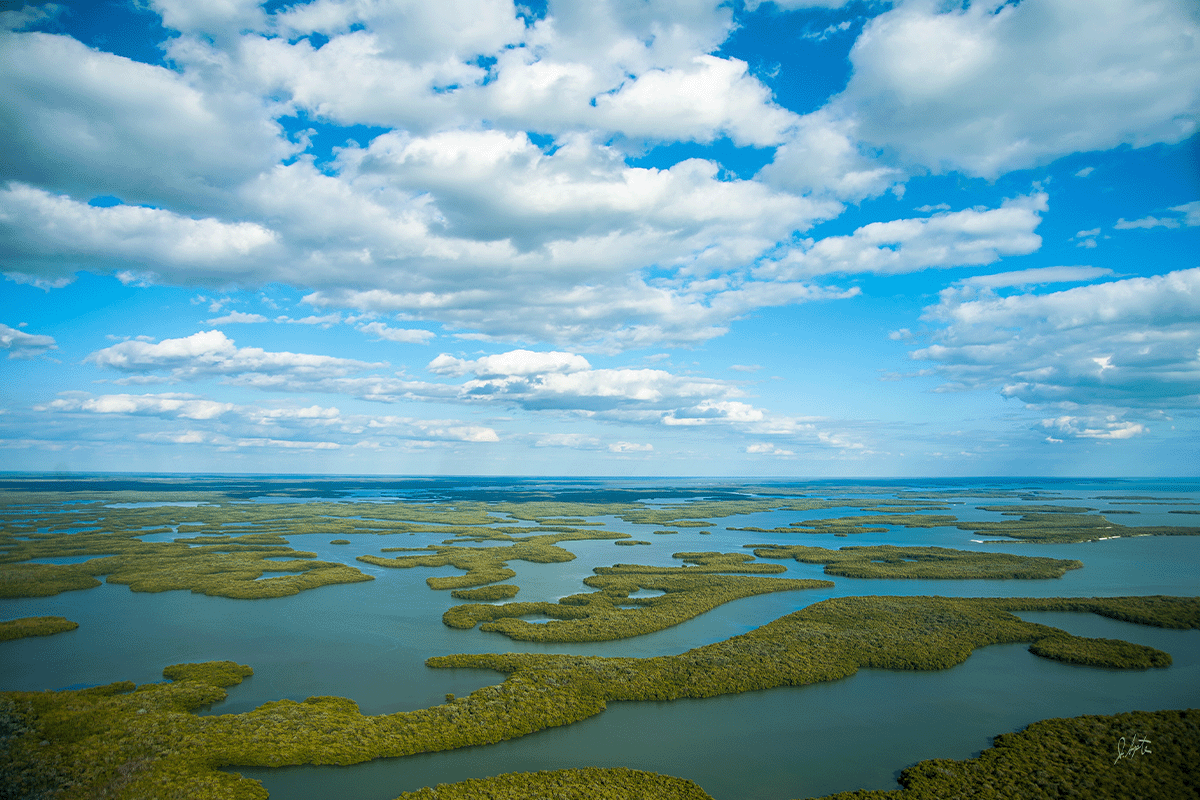 Aerial view of the Ten Thousand Islands in Everglades National Park.
Aerial view of the Ten Thousand Islands in Everglades National Park.
Mangroves offer a plethora of ecosystem services, such as:
- Coastal protection: Mangrove roots trap sediments and provide a natural buffer against storm surges, protecting coastal communities from erosion and damage during hurricanes and tsunamis.
- Habitat for marine life: The tangled roots and branches of mangroves serve as nurseries for numerous marine species, including fish, crabs, and shrimp. These areas are essential for the early stages of many marine organisms’ life cycles.
- Carbon sequestration: Mangroves are exceptional at capturing and storing carbon dioxide from the atmosphere. Their dense organic material accumulates in waterlogged soils, locking away carbon for long periods.
Explore DGB’s carbon removal and biodiversity projects
Despite their importance, mangrove forests face various threats, including habitat destruction due to urban development, aquaculture, and pollution from nearby industries. Conservation efforts involve:
- Reforestation projects: Initiatives to replant mangroves in areas where they have been removed or degraded.
- Sustainable aquaculture practices: Promoting responsible aquaculture practices that don’t harm mangrove ecosystems.
- Education and awareness campaigns: Raising awareness about the value of mangrove forests and their conservation needs among local communities and the global community.
2. Coral reefs
Coral reefs are diverse underwater ecosystems composed of calcium carbonate structures built by tiny coral polyps. They are primarily found in warm, clear, shallow waters, making them common features in tropical oceans.
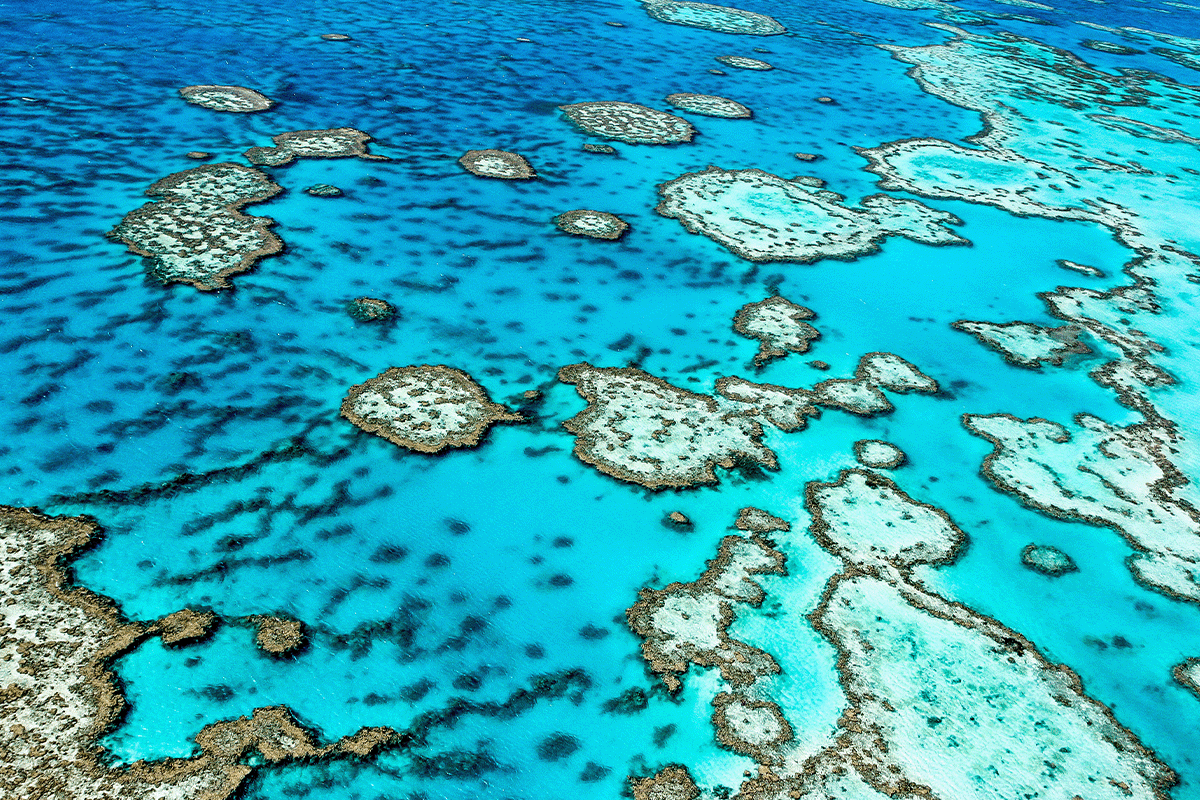 Aerial view of The Great Barrier Reef in Queensland, Australia.
Aerial view of The Great Barrier Reef in Queensland, Australia.
Coral reefs are biodiversity hotspots, housing a vast array of marine species. They are often referred to as the rainforests of the sea due to their rich diversity. This biodiversity extends to economically valuable species, making coral reefs essential for:
- Fisheries: Many commercial fish species rely on coral reefs for breeding and feeding, supporting the livelihoods of millions of people.
- Tourism and recreation: Coral reefs are a major attraction for tourists who come to snorkel, dive, and observe the stunning underwater life.
One of the most significant threats to coral reefs is coral bleaching, which occurs when corals expel the symbiotic algae living in their tissues due to stress, often caused by rising sea temperatures. To protect coral reefs, conservation efforts include:
- Reducing carbon emissions: Addressing climate impacts by reducing carbon emissions is crucial to combat coral bleaching.
- Marine protected areas: Establishing protected zones where fishing and other potentially damaging activities are restricted.
- Coral restoration initiatives: Actively restoring damaged reefs through techniques like coral gardening.
Explore the benefits of green investing
3. Seagrass meadows
Seagrass meadows are underwater ecosystems dominated by submerged flowering plants known as seagrasses. These remarkable plants have adapted to life in coastal waters, thriving in the dynamic interface between land and sea. Seagrasses are not your typical land-based grasses; they have evolved specialised features that enable them to thrive in the challenging marine environment. These underwater meadows create a stunning sight as they carpet the seabed with their lush greenery, waving gently with the ebb and flow of the tides.
Seagrasses play a vital role in carbon sequestration by capturing and storing carbon dioxide from the atmosphere. Like terrestrial plants, they use sunlight to convert CO2 into organic matter through the process of photosynthesis, and in doing so, they remove substantial amounts of carbon dioxide from the air. What sets seagrasses apart is their efficient carbon storage capacity. Unlike most terrestrial plants that release carbon back into the atmosphere when they die and decompose, seagrasses trap sediments and organic matter with their complex root systems.
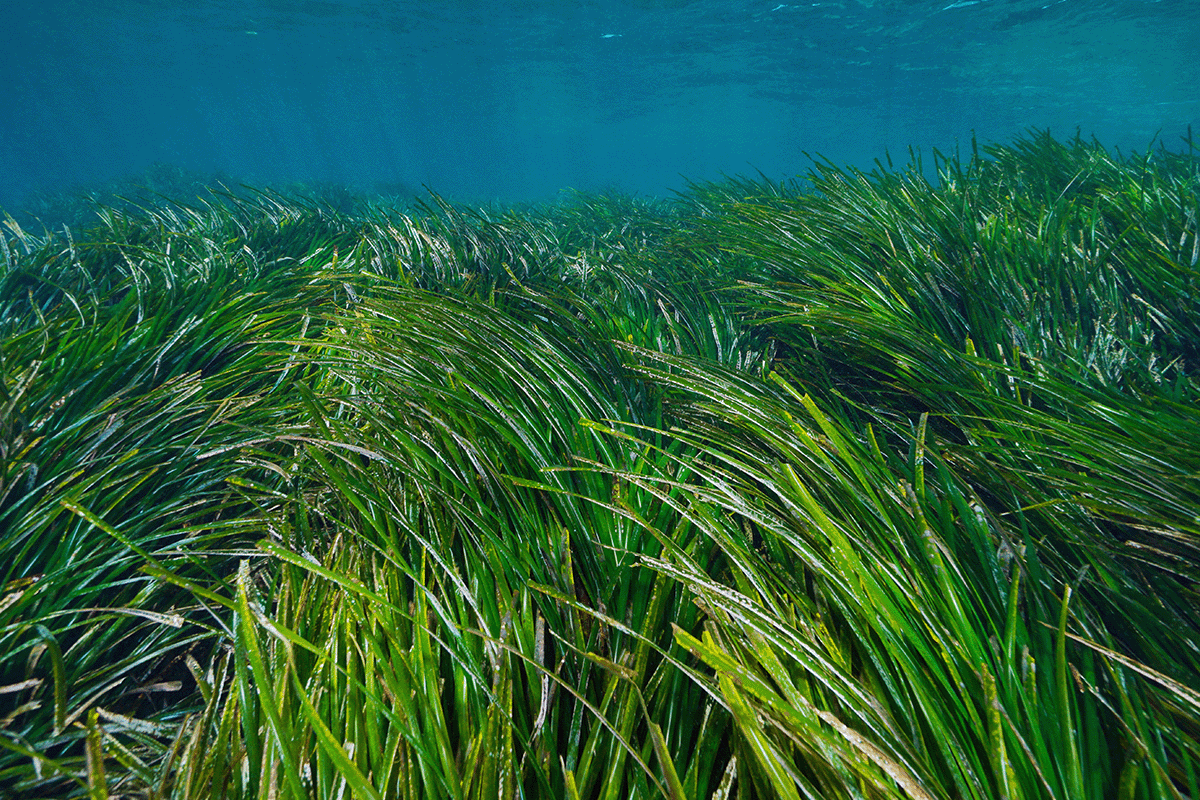 Seagrass underwater in the Mediterranean, France.
Seagrass underwater in the Mediterranean, France.
Moreover, seagrass meadows contribute to the overall health of coastal ecosystems by stabilising sediments, filtering pollutants, and providing critical habitat for a wide range of marine species. These underwater gardens are not just beautiful but also essential components of our planet’s efforts to mitigate environmental impacts and preserve our oceans’ health.
Read more: How to protect the oceans and marine life
Threats to seagrass meadows include pollution from runoff, coastal development, and damage from boating activities. Conservation strategies involve:
- Marine conservation areas: Establishing protected zones that restrict harmful activities in seagrass habitats.
- Promoting sustainable fishing practices: Reducing the impact of fishing on seagrass ecosystems.
- Reducing nutrient pollution: Implementing measures to reduce nutrient runoff from agriculture and development.
4. Kelp forests
Kelp forests are remarkable underwater ecosystems characterised by their dominance of large brown algae known as kelp. These towering algae can reach impressive heights, sometimes extending to more than 30 metres. Kelp forests are typically found in cold, nutrient-rich waters along coastlines in both the Northern and Southern Hemispheres. These regions provide the ideal conditions for kelp growth, with cold waters delivering a constant supply of essential nutrients.
Read more: Why are tropical rainforests important?
Kelp forests are biodiversity hotspots, supporting various species, from sea otters to fish. These towering algae provide critical habitat and food for marine life. Additionally, they serve as important carbon sinks, helping to mitigate environmental impacts by absorbing and storing carbon.
Kelp forests offer a variety of habitats for marine life. From the holdfasts that anchor the kelp to the seafloor to the canopy-like tops where sunlight filters through, these forests provide shelter and refuge for numerous species. Small fish seek shelter among the fronds, while larger predators, such as sea otters and seals, rely on the kelp as a source of food and protection.
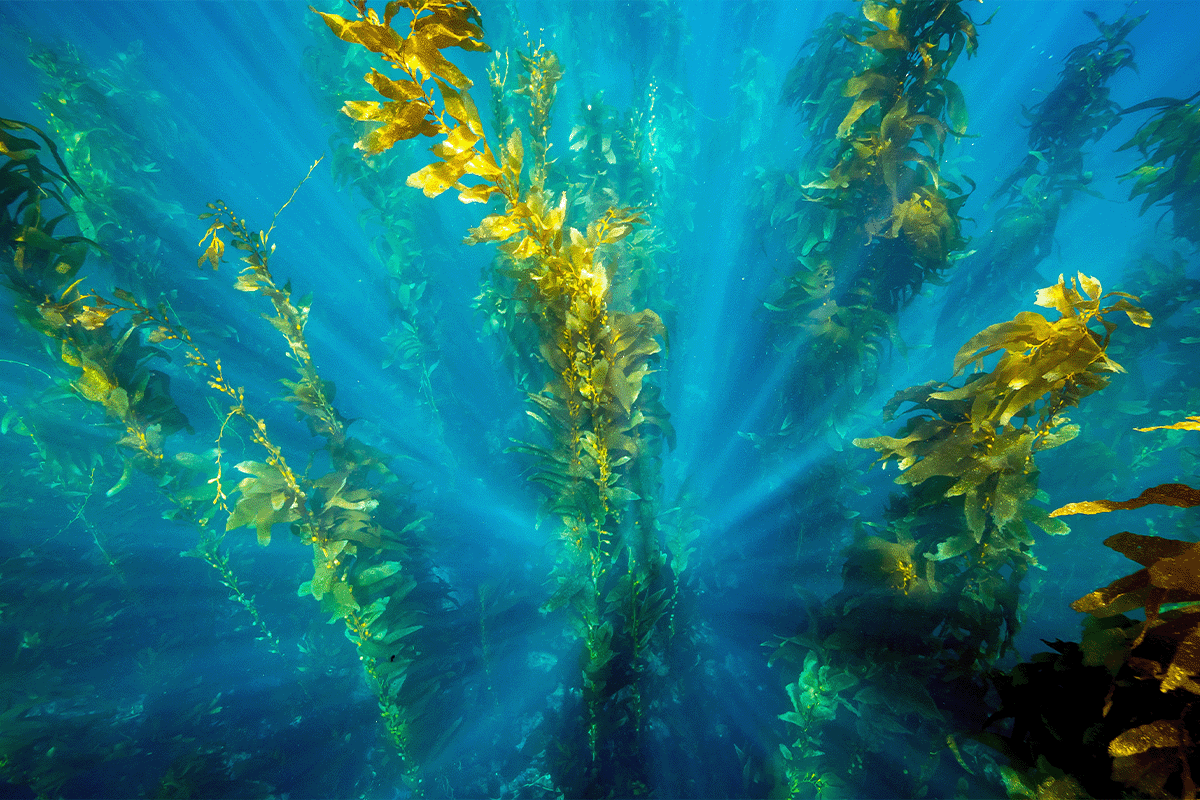 Underwater image of kelp off the shores of Catalina Island.
Underwater image of kelp off the shores of Catalina Island.
Kelp itself is a primary source of nutrition for many species. Herbivorous fish and invertebrates graze on the kelp fronds, creating a complex food web within the forest. In turn, these herbivores become prey for larger carnivorous species, further enriching the ecosystem’s biodiversity.
Kelp forests face threats from activities such as overfishing, pollution, and habitat destruction. Conservation measures include:
- Marine protected areas: Establishing areas where kelp forests are safeguarded from detrimental activities.
- Sustainable fishing practices: Implementing responsible fishing practices that minimise damage to kelp ecosystems.
- Monitoring and research: Continuously studying kelp forests to understand their dynamics better and inform conservation efforts.
5. Sargassum beds
Sargassum beds are a distinctive and fascinating feature of the marine world. These unique floating mats of brown seaweed are primarily found in the Sargasso Sea, a region located in the North Atlantic Ocean. The Sargasso Sea is renowned for being the only sea on Earth without defined shorelines. Instead, it is defined by the convergence of ocean currents, creating a vast, open expanse of water.
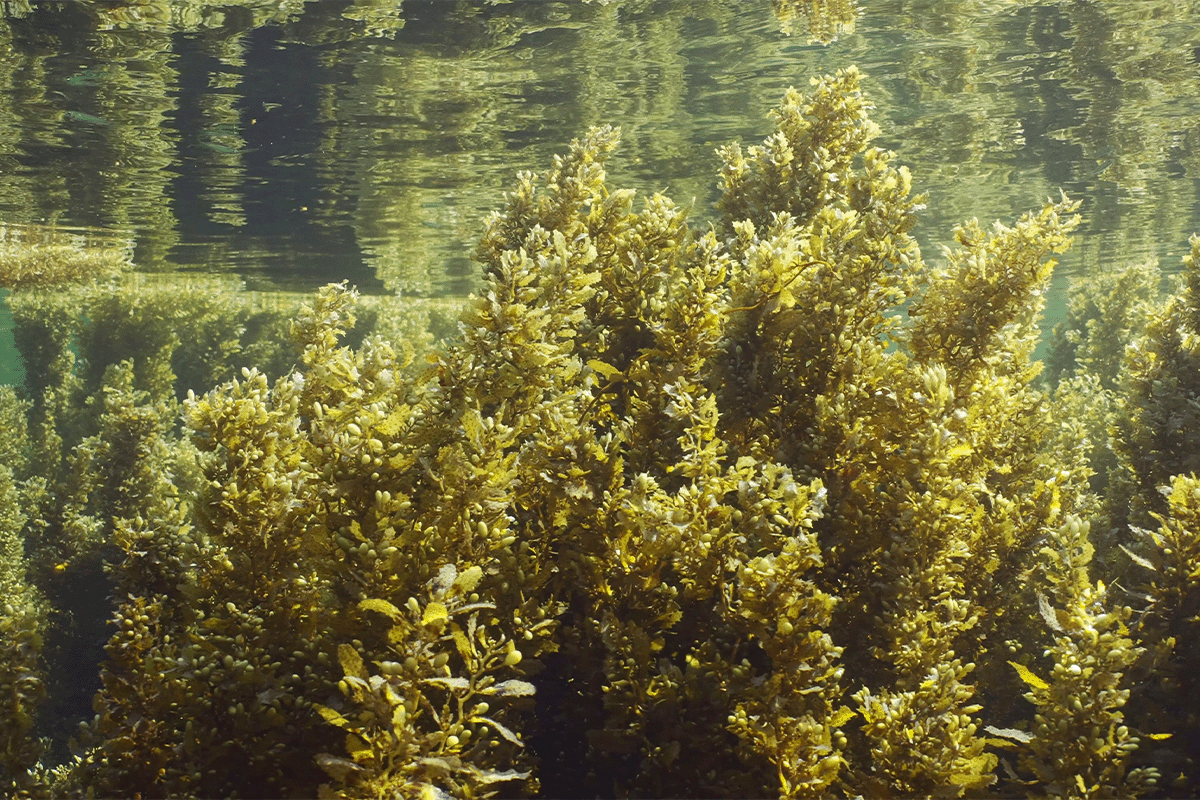 Sargassum beds swaying on waves, Red sea, Egypt.
Sargassum beds swaying on waves, Red sea, Egypt.
Sargassum beds stand apart from traditional marine ecosystems. Unlike most ecosystems that are anchored to the seafloor or coastlines, Sargassum beds exist as free-floating entities, drifting with ocean currents. This characteristic makes them unlike any other environment in the world’s oceans, creating a haven for marine life in a truly unique setting.
The Sargassum seaweed provides essential habitats and sustenance for a diverse array of organisms. Among these species are juvenile sea turtles, such as the critically endangered Kemp’s ridley turtle, which use the floating Sargassum mats as shelter and a source of food. Additionally, various fish species, including the Sargassum fish and Sargassum triggerfish, are intricately linked to these floating ecosystems, using them as a refuge and a hunting ground. Moreover, numerous invertebrates, like crabs and shrimp, find shelter and food within these intricate structures.
While Sargassum beds are natural phenomena, their invasion in coastal areas can disrupt ecosystems and impact local economies. Mitigation efforts include:
- Monitoring and early detection: Tracking Sargassum movements to prepare for potential invasions.
- Removal and clean-up efforts: When Sargassum accumulates on beaches, efforts are made to remove it to prevent environmental damage.
- Research on potential uses: Exploring ways to turn the harvested Sargassum into valuable products, such as fertilisers or biofuels.
Safeguarding biodiversity: DGB Group’s mission
These five blue forests are not only captivating but also indispensable for the health and wellbeing of our planet. From the protective embrace of mangroves to the awe-inspiring biodiversity of coral reefs, they significantly contribute to Earth’s vitality. Seagrass meadows, kelp forests, and Sargassum beds add further layers of richness to marine ecosystems while playing a crucial role in mitigating the impacts of changing environmental conditions.
As custodians of our planet, we must safeguard and conserve these invaluable ecosystems for today and tomorrow. Recognising their significance and rallying behind conservation initiatives, we can ensure the enduring wellbeing of these vital blue forests.
In synergy with this imperative, at DGB Group, we believe in the inherent power of nature and the critical importance of biodiversity. This propels our unwavering commitment to advancing conservation efforts. Through our carbon projects and plastic credit programme, we are dedicated to nurturing thriving and healthy ecosystems.
Read more: The ultimate guide to plastic credits
We collaborate closely with farmers, landowners, governments, and esteemed conservation organisations to turn this vision into a tangible reality. Our initiatives are devoted to enriching biodiversity and restoring forests. Our plastic credit programme focuses on removing and recycling plastic waste that would otherwise end up in our oceans and other vital ecosystems. Each plastic credit you buy constitutes 1,000 kg of plastic cleaned up and recycled. Together, we can make a meaningful impact on the sustainability of our planet and its precious forests.
Join us in saving our blue forests: reduce your plastic footprint with DGB
- SEO Powered Content & PR Distribution. Get Amplified Today.
- PlatoData.Network Vertical Generative Ai. Empower Yourself. Access Here.
- PlatoAiStream. Web3 Intelligence. Knowledge Amplified. Access Here.
- PlatoESG. Carbon, CleanTech, Energy, Environment, Solar, Waste Management. Access Here.
- PlatoHealth. Biotech and Clinical Trials Intelligence. Access Here.
- Source: https://www.green.earth/blog/beneath-the-waves-diving-into-the-importance-of-blue-forests



